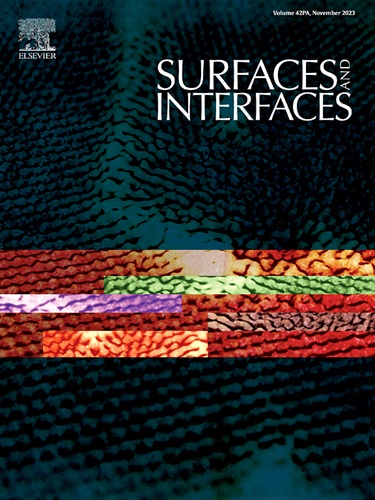Study on CO2 gasification mechanism of bituminous coal coke by in-situ measurement and DFT calculation
IF 5.7
2区 材料科学
Q2 CHEMISTRY, PHYSICAL
引用次数: 0
Abstract
CO2 gasification with coal/coke is an important technology that can convert and store CO2 into chemical products in a massive and feasible way. Understanding the mechanism of the CO2-coke gasification is the basis for the industrialization and designation of CO2 gasifier, which provide fundamental technology for Carbon Capture, Utilization and Storage (CCUS). In this work, the CO2 gasification process was studied by Thermogravimetric-Fourier Transform Infrared Spectrometer Mass Spectrometer (TG-FTIR), Thermogravimetric-Mass Spectrometer (TG-MS) and in-situ Raman. The atomic level mechanism of CO2 reaction with coke was analyzed by Density Functional Theory (DFT) calculation. The result shows that the COO-group in the coke is the CO precursor from the CO2-coke gasification. In the process of pre-adsorption of CO2 on the surface of coal coke, the C![]() O-O- group is formed, and the degree of the electron conjugation of the aromatic ring pi is decreased, and the strength of intermolecular mayer bond is decreased, destroying the aromaticity of the coal coke molecular surface, exposing more active sites, accelerating the gasification reaction of coal coke, and promoting CO desorption. And the entire gasification process is the endothermic reaction with 1.60 eV.
O-O- group is formed, and the degree of the electron conjugation of the aromatic ring pi is decreased, and the strength of intermolecular mayer bond is decreased, destroying the aromaticity of the coal coke molecular surface, exposing more active sites, accelerating the gasification reaction of coal coke, and promoting CO desorption. And the entire gasification process is the endothermic reaction with 1.60 eV.

通过现场实测和DFT计算对烟煤焦炭的CO2气化机理进行了研究
煤/焦炭气化是将二氧化碳大量、可行地转化和储存为化工产品的一项重要技术。了解CO2-焦炭气化机理是实现CO2气化炉产业化和设计的基础,为实现碳捕集、利用与封存(CCUS)提供了基础技术。采用热重-傅里叶变换红外光谱仪(TG-FTIR)、热重-质谱仪(TG-MS)和原位拉曼光谱仪对CO2气化过程进行了研究。采用密度泛函理论(DFT)计算分析了CO2与焦炭反应的原子水平机理。结果表明,焦炭中的CO -基团是co2 -焦炭气化过程中的CO前驱体。在煤焦表面预吸附CO2的过程中,CO- o -基团形成,芳香环pi的电子共轭度降低,分子间mayer键的强度降低,破坏了煤焦分子表面的芳香性,暴露出更多的活性位点,加速了煤焦的气化反应,促进了CO的解吸。整个气化过程为1.60 eV的吸热反应。
本文章由计算机程序翻译,如有差异,请以英文原文为准。
求助全文
约1分钟内获得全文
求助全文
来源期刊

Surfaces and Interfaces
Chemistry-General Chemistry
CiteScore
8.50
自引率
6.50%
发文量
753
审稿时长
35 days
期刊介绍:
The aim of the journal is to provide a respectful outlet for ''sound science'' papers in all research areas on surfaces and interfaces. We define sound science papers as papers that describe new and well-executed research, but that do not necessarily provide brand new insights or are merely a description of research results.
Surfaces and Interfaces publishes research papers in all fields of surface science which may not always find the right home on first submission to our Elsevier sister journals (Applied Surface, Surface and Coatings Technology, Thin Solid Films)
 求助内容:
求助内容: 应助结果提醒方式:
应助结果提醒方式:


